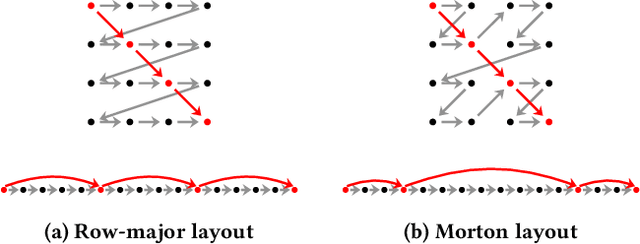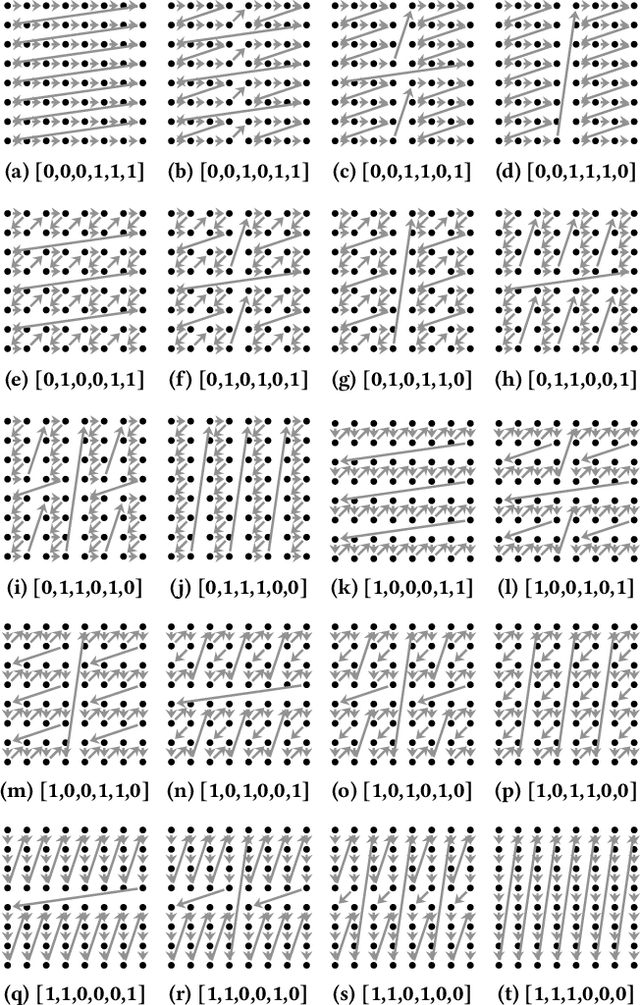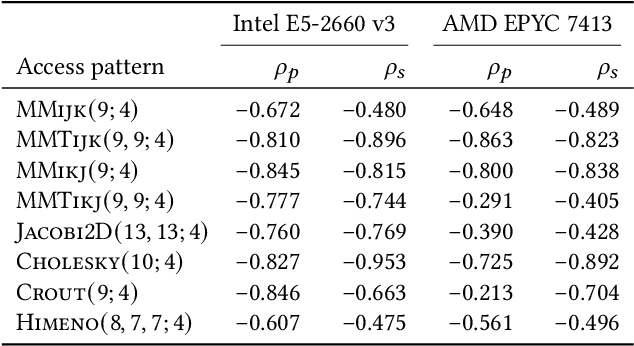Stephen Nicholas Swatman
Finding Morton-Like Layouts for Multi-Dimensional Arrays Using Evolutionary Algorithms
Sep 13, 2023



Abstract:The layout of multi-dimensional data can have a significant impact on the efficacy of hardware caches and, by extension, the performance of applications. Common multi-dimensional layouts include the canonical row-major and column-major layouts as well as the Morton curve layout. In this paper, we describe how the Morton layout can be generalized to a very large family of multi-dimensional data layouts with widely varying performance characteristics. We posit that this design space can be efficiently explored using a combinatorial evolutionary methodology based on genetic algorithms. To this end, we propose a chromosomal representation for such layouts as well as a methodology for estimating the fitness of array layouts using cache simulation. We show that our fitness function correlates to kernel running time in real hardware, and that our evolutionary strategy allows us to find candidates with favorable simulated cache properties in four out of the eight real-world applications under consideration in a small number of generations. Finally, we demonstrate that the array layouts found using our evolutionary method perform well not only in simulated environments but that they can effect significant performance gains -- up to a factor ten in extreme cases -- in real hardware.
Reduced Simulations for High-Energy Physics, a Middle Ground for Data-Driven Physics Research
Aug 30, 2023Abstract:Subatomic particle track reconstruction (tracking) is a vital task in High-Energy Physics experiments. Tracking is exceptionally computationally challenging and fielded solutions, relying on traditional algorithms, do not scale linearly. Machine Learning (ML) assisted solutions are a promising answer. We argue that a complexity-reduced problem description and the data representing it, will facilitate the solution exploration workflow. We provide the REDuced VIrtual Detector (REDVID) as a complexity-reduced detector model and particle collision event simulator combo. REDVID is intended as a simulation-in-the-loop, to both generate synthetic data efficiently and to simplify the challenge of ML model design. The fully parametric nature of our tool, with regards to system-level configuration, while in contrast to physics-accurate simulations, allows for the generation of simplified data for research and education, at different levels. Resulting from the reduced complexity, we showcase the computational efficiency of REDVID by providing the computational cost figures for a multitude of simulation benchmarks. As a simulation and a generative tool for ML-assisted solution design, REDVID is highly flexible, reusable and open-source. Reference data sets generated with REDVID are publicly available.
 Add to Chrome
Add to Chrome Add to Firefox
Add to Firefox Add to Edge
Add to Edge